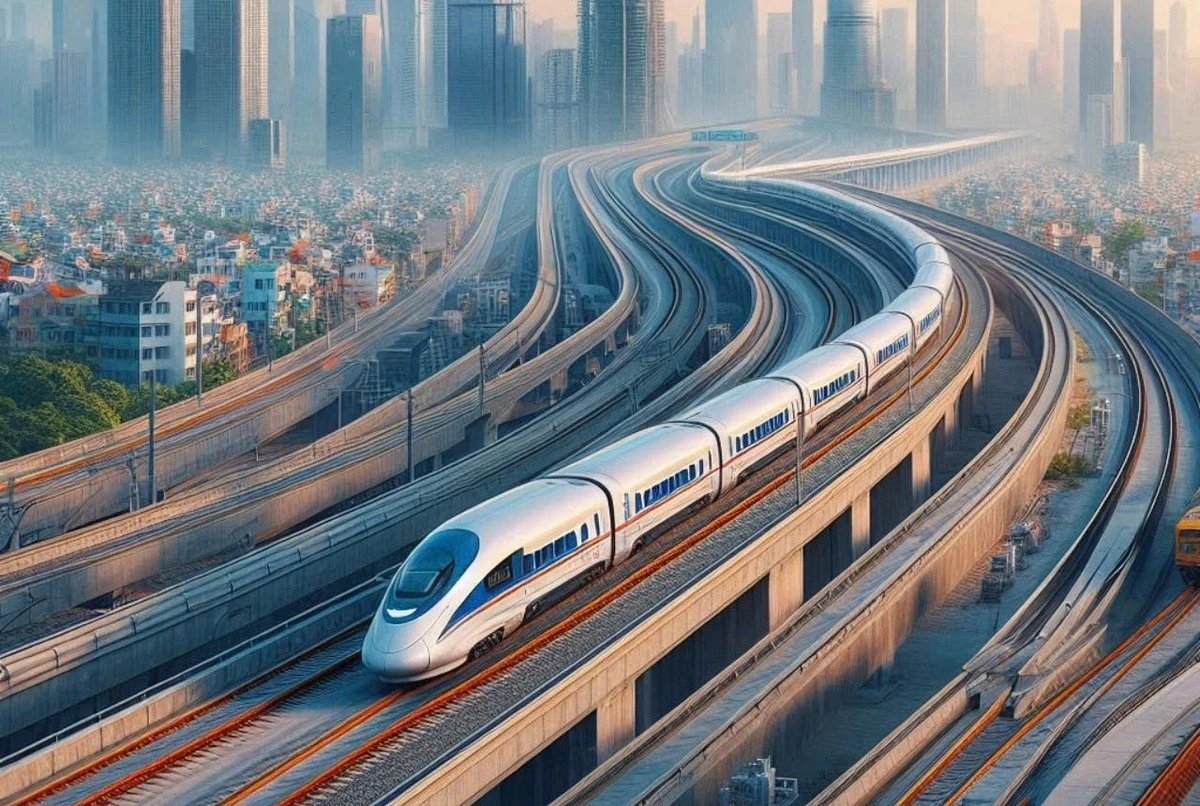
Therefore, people in neighboring areas of Hanoi and Ho Chi Minh City such as Thanh Hoa, Vinh, Binh Duong , Dong Nai... can completely work in big cities, thereby restructuring labor and population distribution as well as restructuring the urban network:
"People in Thanh Hoa, Ha Nam, Vinh, Nam Dinh before could go to work during the day. It is not necessary to buy a house in Hanoi but can still work in Hanoi. That is the reallocation of population and labor. With such a reallocation of population and labor, the number of large urban areas will certainly decrease. Secondly, with fast connection and interconnectivity between urban areas, there will be almost no distance between large cities and large urban areas." According to Mr. Tran Ngoc Chinh, Chairman of the Vietnam Urban Planning and Development Association, high-speed railways will create space for economic development of localities, specifically urban areas of localities. Because the high-speed railway stations are all located in large cities, it means that the high-speed railway will create conditions for connecting economic and urban spaces: "The connection of this high-speed railway is first of all the connection of urban development space, so the first thing is that it will expand the economic space of the cities along the entire route, creating conditions for connecting national traffic with the cities quickly. Therefore, I had the idea that it is necessary to re-study all the urban planning of all localities where high-speed railway trains pass through". According to the proposed plan of the Project Consultant, the North-South high-speed railway will pass through 20 provinces and cities, with 23 passenger stations. The distance between the nearest stations is more than 20km and the farthest is more than 100km. Architect Tran Huy Anh, member of the Hanoi Architects Association, said that currently 63 provinces and cities have completed local planning, with the Politburo and the Central Executive Committee having approved the investment policy for the construction of the North-South high-speed railway and assigned the Government to develop a project to submit to the National Assembly, so there will be differences in the planning period in the near future. The appearance of the urban railway will force the implementation of urban restructuring in the areas where the railway passes through, but still always follow the principle: "Each station is a settlement point. All high-speed urban railway lines in countries around the world, whenever the road connects the urban area along that route. The principle is the straighter the better. The problem of all residential areas and settlements depends on the location of the station, not the station depending on the residential area". Many urban experts believe that, in addition to its role as a driving force for local economic development, high-speed railways will have a huge impact on the development of existing urban areas, opening up opportunities for the development of new urban areas in favorable locations, especially hub stations. In practice, the areas of high-speed railway stations around the world are always places where people are concentrated, or hotels, service activities, commercial centers, etc. Therefore, new residential and urban areas can be formed in each station area.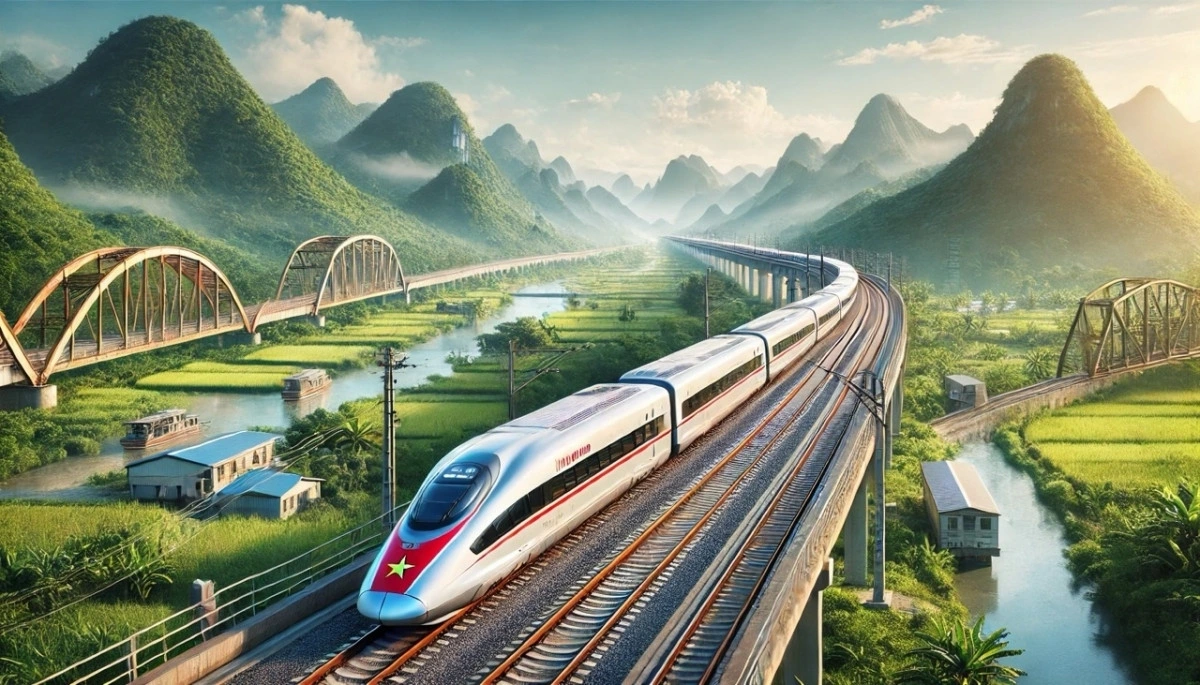
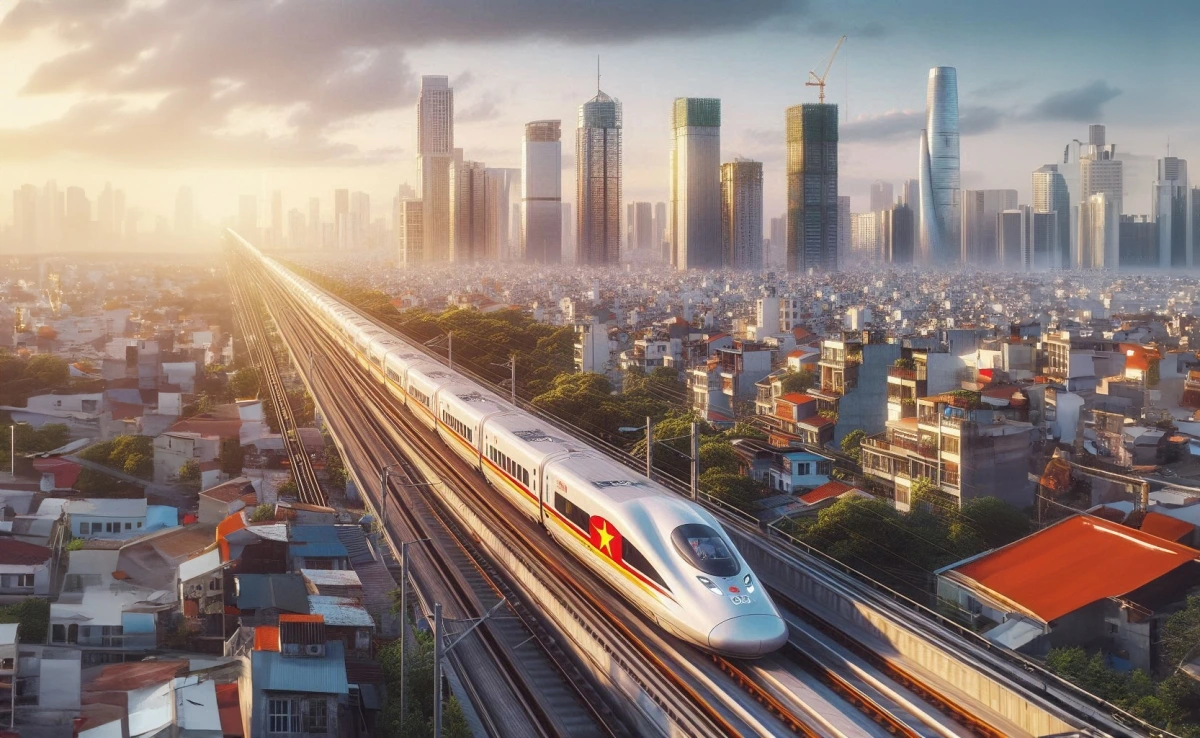
What are the advantages of a chain of urban areas forming along a high-speed rail line?
The most important advantage is the ability to connect and interact between these cities. This ability helps railway cities easily become regional service centers, reducing pressure on neighboring administrative, cultural and social centers. Therefore, railway cities should be planned and designed to become service centers, with compatible infrastructure. Accordingly, priority infrastructure will be static traffic, warehouses, traffic connection points, shopping centers, and product introductions. Railway cities, envisioned as service centers, therefore need to clearly orient their functions so as not to become ambitious to become multi-functional mega cities. Residents in these cities are business people and service providers, so urban design must take into account cultural factors, lifestyles, and living needs of its natural residents. Right now, when the North-South high-speed railway is still in project status, what needs to be done is to clarify the opportunities it creates, to make the best use of them, and to avoid causing negative impacts that the project may create. For example: Service cities formed along the railway line must be new cities, where there are stations. They will not be existing administrative centers, and will not increase pressure on old cities. High-speed railway stations, located in railway cities, will therefore not just be traditional stations, but a complex of accessible services. The station is both a shopping center, introducing regional products, and a center for goods trading, logistics, tourist offices, and a traffic transfer connection point (including parking lots, car rental services, bus stations, etc.). The residents of these cities are mostly people working in the commercial and service sectors, so the planning will be compact urban areas, with mainly apartment buildings and rental housing funds, not prioritizing low-rise houses. Railway cities will be cities of public transport, with coherent planning, prioritizing functionality. With an image that when the high-speed railway line is formed, we will have dozens more railway cities with the above functional characteristics, what will happen? First, administrative centers will be reduced when there is a natural shift of residents. Second, railway cities are positioned as service cities, with a complex of connecting transport services that will reduce the need to use personal vehicles on roads between regions. High-speed railways, although they may not easily bring economic efficiency from the transportation aspect, but by approaching the possibility of forming railway cities as an opportunity early, we will see a positive vision of the country's development space.VOV.vn
Source: https://vov.vn/xa-hoi/quy-hoach-do-thi-the-nao-doc-theo-ga-duong-sat-toc-do-cao-post1128196.vov





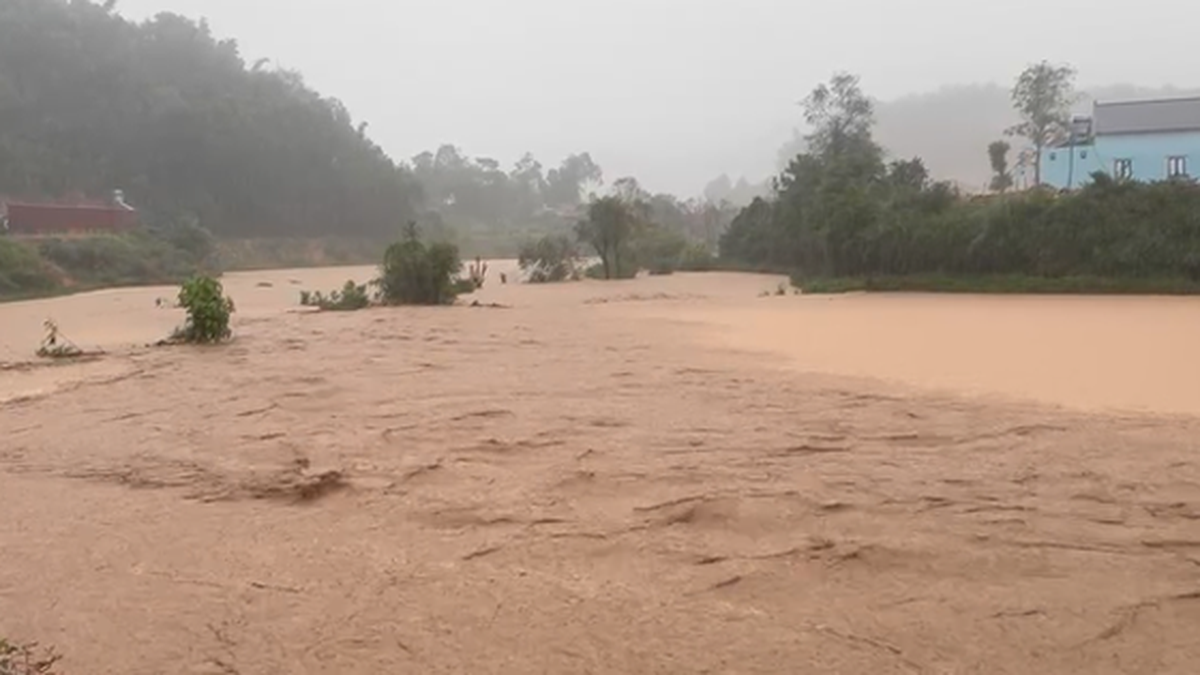
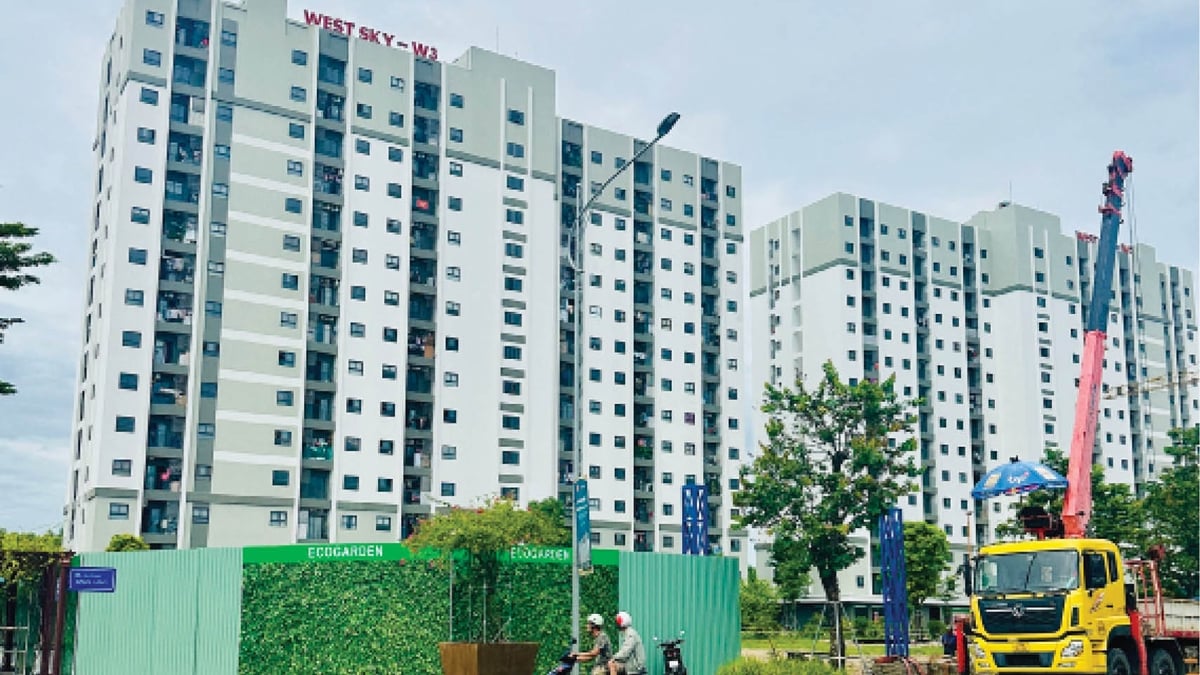



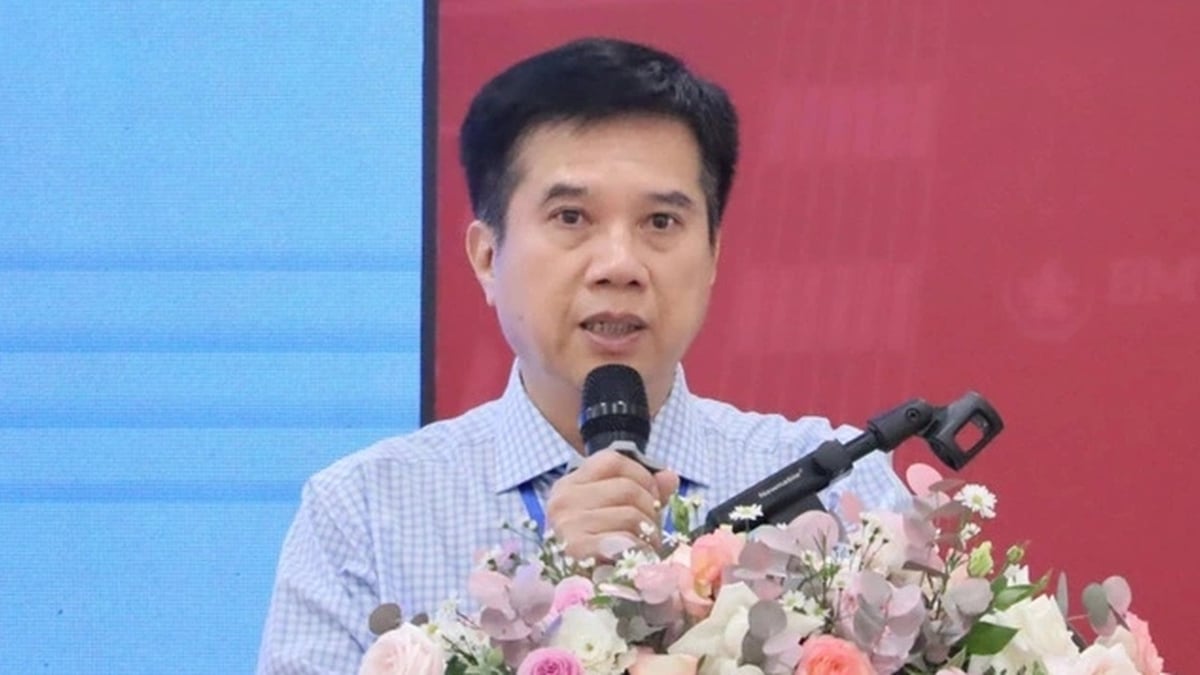























































































Comment (0)